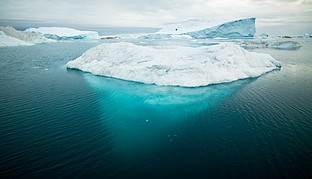
Antarctica is covered with a sheet of ice. In the Arctic, the pole is capped by deep ice floating on the sea and all the land north of the timber line is frozen. There are only two seasons – a long winter and a short summer – the day varying from complete darkness in midwinter to 24 hours of daylight at midsummer.
Arctic summer temperatures can rise to 65°F (18°C), except on glaciers and frozen seas, but fall in winter to as low as -69°F (-56°C) and are never above the freezing point. In the norther forests, summer temperatures can reach 100°F (37°C) but altitude pushes winter temperatures even lower than the Arctic. In eastern Siberia a temperature of -94°F (-69°C) has been recorded at Verkhoyansk, located in the Russian republic of Yakutia.
Temperatures in the Antarctic have been recorded at −128.6 °F (−89.2 °C) at Vostok Station .
Antarctic winds of 110 mph (177 kph) have been recorded and, in the Arctic autumn, winter winds reach hurricane force and can whip snow 100 ft (30 m) into the air, giving the impression of a blizzard – even when it is not snowing. Accompanied by low temperatures, winds have a marked chilling effect – much greater than the temperature indicates.
For instance, a 20 mph (32 kph) wind will bring a temperature of 7°F (-14°C) down to -30°F (-34°C) and one at 40 mph (64 kph) would make it -44°F (-42°C) with even greater drops at lower temperatures. Speeds over 40 mph (64 kph) do not appear to make a greater difference.